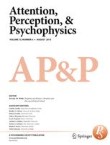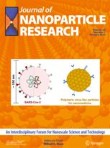|
Anapafseos 5 Agios Nikolaos 72100,Crete,Greece,00302841026182,00306932607174,alsfakia@gmail.com
Blog Archive
- ► 2022 (3010)
- ► 2021 (9899)
-
▼
2020
(4138)
-
▼
November
(1979)
-
▼
Nov 19
(100)
- Facial features and head movements obtained with a...
- The pleasure of multiple images
- Adsorbents for removal of cationic dye: nanocellul...
- Comparison of the Long-term Outcome Between Billro...
- Radiotherapy for Resectable and Borderline Resecta...
- Alteration of FBXW7 is Associated with Worse Survi...
- Targets for Intervention? Preoperative Predictors ...
- Impact of palladium nanoparticles (Pd-NPs) on the ...
- Colloidal stability and aggregation kinetics of na...
- Discovering Decolorization Potential of Triphenylm...
- Open abdomen in the trauma ICU patient: who? when?...
- Atrial thrombus as a complication of SLE and APS i...
- Temporal Variation of Road Dust Load and Its Size ...
- Perceived and Preferred Social Support in Patients...
- Sex differences in the physiological adaptations t...
- Exact solutions of a quantum system placed in a Kr...
- Pharmacological Interactions between the Dual Orex...
- High-dose rocuronium-induced paralysis of the addu...
- Comparison of colloid and crystalloid using goal-d...
- Associations of Maternal Trait Anger Expression an...
- Assessing HIV Care Outcomes Among African-Born Peo...
- Rodlike nanoparticle parameter measurement method ...
- Factors Associated with Smoking Relapse in the Ear...
- The Relationship Between Mother–Child Bonding Impa...
- Changes in Erythropoiesis Stimulating Agent Use Un...
- Minimising risk to thoracic surgical teams in an e...
- Intracardiac relation of extrahepatic persistent r...
- The effects of two different intensities of aerobi...
- Clinical efficacy and safety of bone cement combin...
- The Price of Pre-adolescent Abuse: Effects of Sexu...
- SELECT-GLYCOCIN: a recombinant microbial system fo...
- Stratification of Readmission after Bariatric Surg...
- Esophageal perforation following pedicle screw pla...
- Health Literacy Within a Diverse Community-Based C...
- Validity and reliability of the self-rated fall ri...
- Crystallization of polylactide-based green composi...
- Traumatic brain injury with concomitant injury to ...
- Successful reconstruction of distal peroneus longu...
- Computer-assisted femoral head reduction osteotomi...
- The guidance of attention by templates for rejecti...
- Differences in standing and sitting spinopelvic sa...
- Complement Coercion in Mandarin Chinese: Evidence ...
- Mass Casualty Incident (MCI) training in a metropo...
- Impact of resistance training status on trunk musc...
- First Expert Evaluation of a New Steerable Cathete...
- Hydrodynamics in Acute Ischemic Stroke Catheters U...
- Parkinson’s disease: current assessment methods an...
- Cryoablation is associated with shorter length of ...
- Robotic Resection of a Central Liver Solitary Fibr...
- Laparoscopic Anatomical Segmentectomy in Tertiary ...
- Radiation-induced cavernous malformation after ste...
- Solitary juxtacortical lesion associated with anti...
- Prehabilitation Programs Improve Exercise Capacity...
- Quality Versus Costs Related to Gastrointestinal S...
- Performing Omentectomy During Gastrectomy Does Not...
- Effectiveness of surgical fixation for rib fractur...
- Effects of model calibration on hydrological and w...
- Liver graft harbouring hydatid disease: how far ca...
- Warmer incubation temperature influences sea turtl...
- Gas aggregated Ag NPs as a matrix for small molecu...
- Hyperthermia, but not dehydration, alters the elec...
- Degenerative lumbar scoliosis patients with proxim...
- A Literature Review and Summary Recommendations of...
- High volume on line hemodiafiltration in dialysis ...
- Dielectric studies of polycrystalline bismuth tita...
- Active and Passive Exposure to Tobacco and e-Cigar...
- What are the symptoms of idiopathic intracranial h...
- Intracranial hypertension due to spinal cord tumor...
- Validity of the Japanese core outcome measures ind...
- Analytical solitary wave solution of dust ion acou...
- Investigation of the relationship of the number, l...
- Treatment Pattern and Outcomes in Newly Diagnosed ...
- Preparation of melamine–formaldehyde resin-microen...
- Preparation and characterization of PSF-TiO 2 hybr...
- Effects of socioeconomic status on cancer patient ...
- Functional genomic analyses uncover APOE -mediated...
- Right ventricular outflow tract obstruction caused...
- Perfusion in hand arthritis on dynamic contrast-en...
- The Effects of Very Low Energy Diets and Low Energ...
- Preparation of a ferroelectric composite film meta...
- Diagnosis and treatment of intramedullary osteoscl...
- Joint hemorrhage accelerates cartilage degeneratio...
- Abuse and Misuse of Pregabalin and Gabapentin: A S...
- The ground state of the lithium atom in dense plas...
- Validation of novel patient-centred juvenile idiop...
- EndoPil: A Magnetically Actuated Swallowable Capsu...
- Neck Muscle and Head/Neck Kinematic Responses Whil...
- Efficacy of Liraglutide to Prevent Weight Regain A...
- Modeling of Virtual Mechanical Circulatory Hemodyn...
- Urea entrapment in cellulose acetate microparticle...
- Overlapping Molecular Pathways Leading to Autism S...
- BDNF rs6265 Variant Alters Outcomes with Levodopa ...
- Green synthesis of CuFeS 2 nanoparticles using mim...
- Laparoscopic Greater Curvature Plication for the T...
- A Randomized, Controlled Trial Comparing the Impac...
- Antimicrobial Stewardship in the Intensive Care Un...
- Physical Activity, Medical Home, and Health Behavi...
- Seeking international consensus on approaches to p...
- Preoperative accelerated radiotherapy combined wit...
- Solitary extrapleural fibrous tumor with hepatic b...
-
▼
Nov 19
(100)
-
▼
November
(1979)
- ► 2019 (2429)
Αλέξανδρος Γ. Σφακιανάκης
Thursday, November 19, 2020
Facial features and head movements obtained with a webcam correlate with performance deterioration during prolonged wakefulness
The pleasure of multiple images
|
Adsorbents for removal of cationic dye: nanocellulose reinforced biopolymer composites
|
Comparison of the Long-term Outcome Between Billroth-I and Roux-en-Y Reconstruction Following Distal Gastrectomy for Gastric Cancer
|
Radiotherapy for Resectable and Borderline Resectable Pancreas Cancer: When and Why?
|
Alteration of FBXW7 is Associated with Worse Survival in Patients Undergoing Resection of Colorectal Liver Metastases
|
Targets for Intervention? Preoperative Predictors of Postoperative Ileus After Colorectal Surgery in an Enhanced Recovery Protocol
|
Impact of palladium nanoparticles (Pd-NPs) on the biology of neutrophils in vitro and on leukocyte attraction in vivo
|
Colloidal stability and aggregation kinetics of nanocrystal CdSe/ZnS quantum dots in aqueous systems: effects of pH and organic ligands
|
Discovering Decolorization Potential of Triphenylmethane Dyes by Actinobacteria from Soil
|
Open abdomen in the trauma ICU patient: who? when? why? and what are the outcome results?
|






